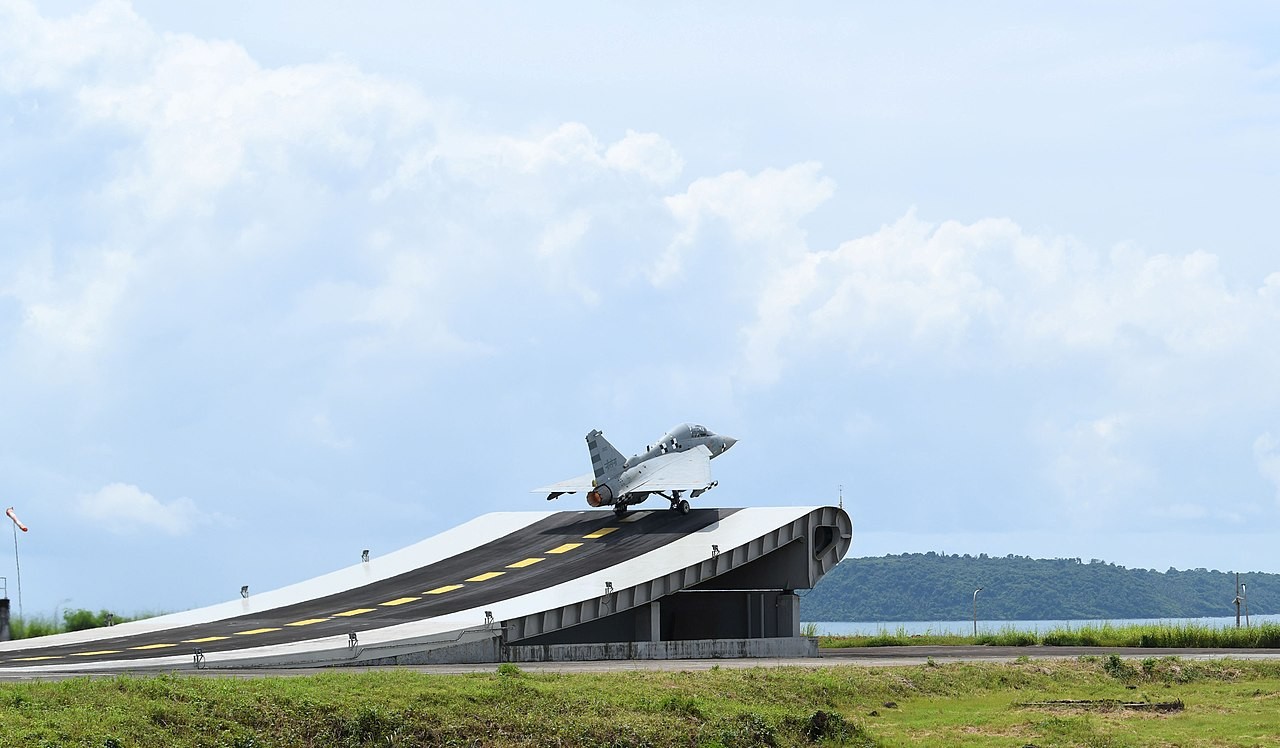Taking a leaf from the South Korean defense industry playbook, the Indian aircraft maker Hindustan Aerospace Limited (HAL) has offered the Philipines to assemble the Light Combat Aircraft LCA Mk1 naval variant locally.
The offer, if materialized, will revolutionize Indian defense exports. Currently, HAL is ramping up its manufacturing facilities to fulfill the bulk order from the Indian Air Force (IAF), which has placed orders for two tranches of 83 and 97 LCA Mk1A.
There have been reports in the Philippines media that the HAL has offered a local assembly of Tejas Mk1 at Philippine Aerospace Development Corp (PADC). Along with the willingness to provide local assembly of the naval strike variant, India is offering soft loans to the archipelagic country to modernize its armed forces.
South Korea, which has seen a 140 percent rise in defense exports, ties localization to its defense exports. South Korean companies not only customize equipment to client needs, they also transfer technology and set up local production.
HAL has been trying to tap into the Southeast Asian region to export its military hardware. The region is key for India to shore up its defense exports.
In 2022, in line with this ambition, HAL set up a second office in Kuala Lumpur, Malaysia, to cater to the entire Southeast Asian region. The flagship product from the HAL’s stable is the Fighter Lead-in Trainer (FLIT) LCA. The aircraft maker is also offering Maintenance and Repair services to the countries with Russian fleets.
While LCA has yet to clinch its maiden deal, the lure of Indian Tejas and local assembly can entice Southeast Asian countries seeking to stand up to China.
The local media has been discussing the naval variant fitted with the BrahMos NG. The proposal seems to be in the preliminary stages, as the officials that the EurAsian Times reached out to said that no concrete development had been made.
In a major milestone, the Naval variant of the LCA undertook its maiden landing onboard the country’s first Indigenous Aircraft Carrier (IAC), INS Vikrant, on February 6, 2023.
In January 2020, the Defence Research and Development Organisation (DRDO) demonstrated a successful arrested landing of Naval Light Combat Aircraft (LCA) on INS Vikramaditya. Subsequently, 18 take-offs and landings were conducted in five days.
However, the Indian Navy projected a requirement for a twin-engine aircraft to operate from the carrier, and the DRDO embarked on developing a Twin Engine Deck-undefined Fighter (TEDBF) based on the experience of the Naval LCA.
The Naval LCA-Mk1 made its maiden flight in April 2012 from the Shore undefined Test Facility (SBTF) in Goa, and two prototypes have been flying as part of the development. It is designed with stronger landing gear to absorb forces exerted by the ski jump ramp during take-off, to be airborne within 200m and land within 100m as against 1000m required for normal runways.
The first LCA ‘Tejas’ Mk1A will take to the skies by the end of this month. It will be delivered to the Indian Air Force (IAF) soon after.
The Mark 1A will have more than 40 improvements from the Mark 1 that are already operational. The new variant of Mark1A has improvements such as air-to-air refueling, beyond-visual-range or BVR capabilities, and the capacity to jam enemy radars.
HAL currently can build 8 LCA aircraft per year. This is being augmented to 16 aircraft every year by 2025 and further to 24 aircraft every year in the next three years.
The deliveries of LCA MK 1A for the IAF are likely to be spread over the next four years as per the schedule, and the IAF is banking to a large extent on the LCA Tejas to make up for the deficiency in fighter squadrons. In light of this, HAL’s proposal to help the Philippines gain the capability to build the fighter domestically.
This move will offset the lack of the large manufacturing base that HAL presently lacks and help the aerospace maker stand up to competition from countries like South Korea and China.

After BrahMos, Tejas For The Philippines
HAL faces tough competition in supplying the Philippines Air Force (PAF) with fighter jets. PAF launched the MRF tender in 2018 as part of the Armed Forces modernization program’s Horizon Two.
The purchase of 12 “fourth generation or higher” multi-role fighter jets will be the PAF’s first fighter jets since the retirement of its Northrop F-5 Tigers in 2005.
While HAL is advertising its Tejas fighter jet to the Philippines, they are going up against more established competitors in the form of Lockheed Martin’s F-16 V and SAAB’s JAS-39C.
Korea Aerospace Industries (KAI) has pitched FA-50 as a cost-effective option to modernize the PAF. The PAF already has 12 FA-50PH in its service. South Korea has offered to upgrade its existing fleet to make it capable of conducting air-to-air ground, air-to-sea, and air-to-air missions.
This includes fitting these aircraft with an assortment of radar and targeting systems along with a 300-gallon external fuel tank to increase the FA-50 PH’s combat range.
HAL draws hope from the Philippines, grounding half its Korean FA-50 fighter jets while flagging logistics woes. Delay in spare delivery hit the operational readiness of the FA-50 jets.
The proposal to arm the island country, with one of the longest coastlines embroiled in a territorial conflict with China, with a naval variant of LCA ‘Tejas’ MK1A would certainly spice up the race.
After signing a US$368 million contract for an India-made Brahmos supersonic missile, the PADC signed a memorandum of understanding (MOU) with HAL.
- Ritu Sharma has been a journalist for over a decade, writing on defense, foreign affairs, and nuclear technology.
- She can be reached at ritu.sharma (at) mail.com
- Follow EurAsian Times on Google News




